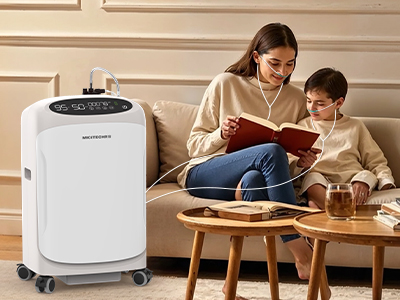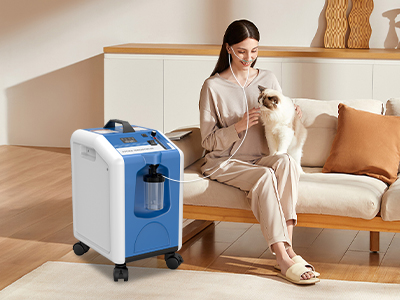31 Mar 2025
Disaster preparedness is all about having the right tools when everything goes wrong. People stockpile food, water, batteries, and first-aid kits. But in the rush to gather essentials, one life-sustaining element is often forgotten—oxygen. In an emergency, air quality can deteriorate fast, making it difficult—even dangerous—to inhale. An oxygen concentrator ensures that no matter what the world throws at you, you and your loved ones can breathe easy.

Understanding Oxygen Concentrators
Unlike oxygen tanks, which store a finite amount of oxygen, concentrators pull oxygen from the surrounding air, filter out impurities, and deliver a continuous flow of high-purity oxygen. This means they never "run out" as long as they have power.
Many people mistakenly believe oxygen concentrators are only for the sick or elderly. In reality, they are vital survival tools for anyone facing conditions where clean air is compromised.
Disaster Scenarios That Affect Air Quality
Emergencies don’t just knock out power and disrupt infrastructure; they can also turn the air around you into a hazardous mix of pollutants and toxins. Here are some of the most common disasters where oxygen concentrators become lifesaving:
Wildfires – Smoke inhalation is a leading cause of respiratory distress during wildfires. Even if you’re miles away from the flames, ash and fine particulate matter can make breathing feel like a struggle.
Earthquakes – Collapsing buildings release clouds of dust, fiberglass, and even asbestos, creating a choking hazard that can last for days.
Industrial Accidents – Chemical leaks and gas explosions can release airborne toxins that make the surrounding air unsafe.
Pandemics – In viral outbreaks affecting the lungs, access to supplemental oxygen can be a game-changer when hospitals are overwhelmed.
Medical Emergencies in Crisis Situations
For individuals with respiratory conditions like COPD, asthma, or heart disease, an oxygen concentrator is more than just helpful—it’s life-saving. During disasters, hospitals may be inaccessible due to blocked roads, overwhelming demand, or power outages. In such moments, having a concentrator at home can provide crucial oxygen support when medical help isn’t immediately available.
Even for healthy individuals, prolonged exposure to low-oxygen environments can lead to dizziness, confusion, and even unconsciousness. A concentrator ensures that oxygen levels remain stable in any crisis.

Portable and Reliable: A Lifesaver in Any Emergency
Modern oxygen concentrators are designed with portability in mind. Many models are lightweight and battery-powered, making them ideal for situations where electricity is unreliable. Some even come with solar charging options or car adapters, allowing you to stay mobile while maintaining access to clean oxygen.
Unlike oxygen tanks, which require periodic refills, concentrators offer continuous oxygen generation as long as power is available. This makes them particularly valuable in prolonged emergencies where resupply chains are disrupted.
Comparing Oxygen Solutions: Why Concentrators Win
Some people assume a few oxygen tanks are enough. The problem? Oxygen tanks have a limited supply and, once depleted, are useless without a refill source.
Oxygen concentrators, on the other hand, continuously extract oxygen from the air, making them a more sustainable and long-term solution. No worrying about running out. No need for dangerous storage. Just pure, accessible oxygen whenever you need it.
How to Choose the Right Oxygen Concentrator
Not all concentrators are created equal. When selecting one for your disaster kit, consider the following:
Portability – A lightweight, compact unit is easier to store and transport.
Battery Life – Longer battery life means greater independence from the grid.
Oxygen Flow Rate – Ensure it meets medical-grade standards.
Power Options – Look for models that support multiple charging methods (AC, DC, solar).
Some of the best disaster-ready models come with high-efficiency filters that remove additional airborne contaminants, ensuring an extra layer of protection.
Conclusion: Preparedness Means Breathing Easy
A disaster kit isn’t just about survival—it’s about resilience. When disaster strikes, an oxygen concentrator can mean the difference between panicked gasping and controlled breathing.
Every household should consider adding an oxygen concentrator to their emergency plan. It’s not just for those with medical conditions—it’s for anyone who values peace of mind and the ability to breathe, no matter what happens. Because in an emergency, every breath counts.
Keywords: oxygen concentrator
Originally published 31 Mar 2025, updated 31 Mar 2025.